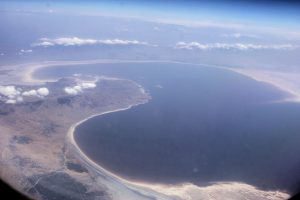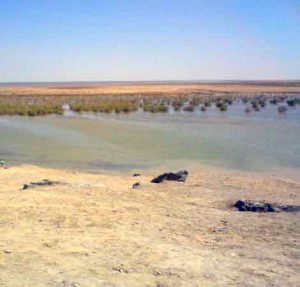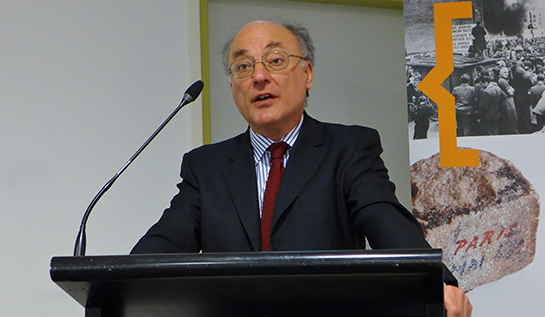Dr. Houchang Chehabi, PhD, is a leading expert in Iranian studies at The Frederick S. Pardee School of Global Studies at Boston University where he is Professor of International Relations and History. Houchang Chehabi has taught at Harvard and has been a visiting professor at the University of St. Andrews, UCLA, and the Universidad Argentina de la Empresa. He has published two books, Iranian Politics and Religious Modernism: The Liberation Movement of Iran under the Shah and Khomeini (1990) and Distant Relations: Iran and Lebanon in the Last 500 Years (2006). He has also co-edited Politics, Society, and Democracy: Comparative Studies(1995); Sultanistic Regimes (1998); Iran’s Constitutional Revolution: Popular Politics, Cultural Transformations, and Transnational Connections (2010); and Iran and the Challenges of the Twenty-First Century: Essays in Honour of Mohammad-Reza Djalili (2013).
JMEPP: How would you describe Iran’s water situation today?
Chehabi: It is the biggest crisis the country faces; because the population has grown, there has been mismanagement of resources, and the resources have declined. It’s basically the biggest existential threat facing the country.
JMEPP: Have Iran’s water challenges been self-inflicted or are they a result of environmental factors, or both?
Chehabi: Both. There has been an ongoing drought in the northwest quadrant of the Indian Ocean. This is felt, for example, in places like Yemen and the Horn of Africa. Even the ongoing crisis in Somalia is partially due to the drought. In the rich countries of the Persian Gulf they have the ability to desalinate water, so the drought is less immediately visible. What is needed is a generalized awareness that the problem is not going to go away. There is no reason why, in the middle of the desert, parks should contain huge lawns.

Lake Urmia. Image taken from Wikicommons.
JMEPP: What are some of the domestic policies that contribute to water issues in Iran?
Chehabi: One is the policy of diverting water from one region to another. There is much debate about this, because people from areas from which water is taken are up in arms. People who have water don’t want their water to be taken and people with limited water seek to enhance their access to this resource. This causes conflict, although for the time being it is under control. But I think it is a miracle that a city like Tehran with so many inhabitants living at the edge of the desert has water coming out of the faucet.
People who have water don’t want their water to be taken and people with limited water seek to enhance their access to this resource.
Another policy that has caused much unintended harm is the obsession with building dams. This is the main reason for the drying up of Lake Urmia in the northwest of the country, for instance. To undo it, lots of farmers who depend on the water of the dammed river would have to be compensated.
JMEPP: What kind of investments do you think are needed in Iran’s water and agriculture sectors?
Chehabi: Desalination plants are the obvious solution. But the pipes and pumping stations needed to convey the water to the Iranian plateau are obviously very expensive. As for agriculture, drip irrigation is the answer, but that costs a lot of money too.
JMEPP: Do you think this is going to have an impact on geopolitics?
Chehabi: One place where it has had an impact is Iran’s border with Afghanistan. There, the Hamun Lake, which straddles the border, has completely dried up. Iranians sometimes accuse Afghans of diverting too much water from the Helmand River (which used to empty into the lake) for irrigation, causing its disappearance. I’m not sure how justified these accusations are, for let us not forget that the Helmand River, like the rest of Afghanistan, has also been affected by the drought.
JMEPP: How does this impact Iran’s agricultural centers, particularly given the country’s desire to export goods such as pistachios?
Chehabi: Successive Iranian governments have striven to make Iran self-sufficient in agricultural products. Given that the population has more than doubled in the last thirty years, tens of thousands of deep wells have been dug, often illegally, to sustain this effort.
Given that the population has more than doubled in the last thirty years, tens of thousands of deep wells have been dug, often illegally…
Or take pistachios, a major export: Production increased dramatically in the 1980s, 1990s and early 2000s, mostly made possible by deep wells. Now the aquifers are exhausted in many places, the wells are going dry, and in the area around Kerman pistachio production is declining.

The Hamun River. Image taken from Wikicommons.
JMEPP: Do you think effective measures can be developed free of politics to comprehensively deal with Iran’s water issues?
Chehabi: Yes. Whatever your ideology is, you cannot go on living without water. I think this is one area where all parties can agree that technocratic solutions must be found without ideology interfering. But of course in Iran, too, there are people like the Governor of Oklahoma who say that the best way to deal with drought is to pray.
JMEPP: What do you think the long-term implications of water issues will be for Iran’s socio-political and economic landscapes?
Chehabi: One consequence of water shortage is increased internal migration. There are villages so remote that is not feasible to transport water to them. So the inhabitants have no choice but to leave for the big cities. Another possible outcome is the sharpening of ethnic conflicts. Azeri nationalists, for instance, are very vocal about the drying up of Lake Urmia, for which they render Iran’s Persian-dominated government responsible.
